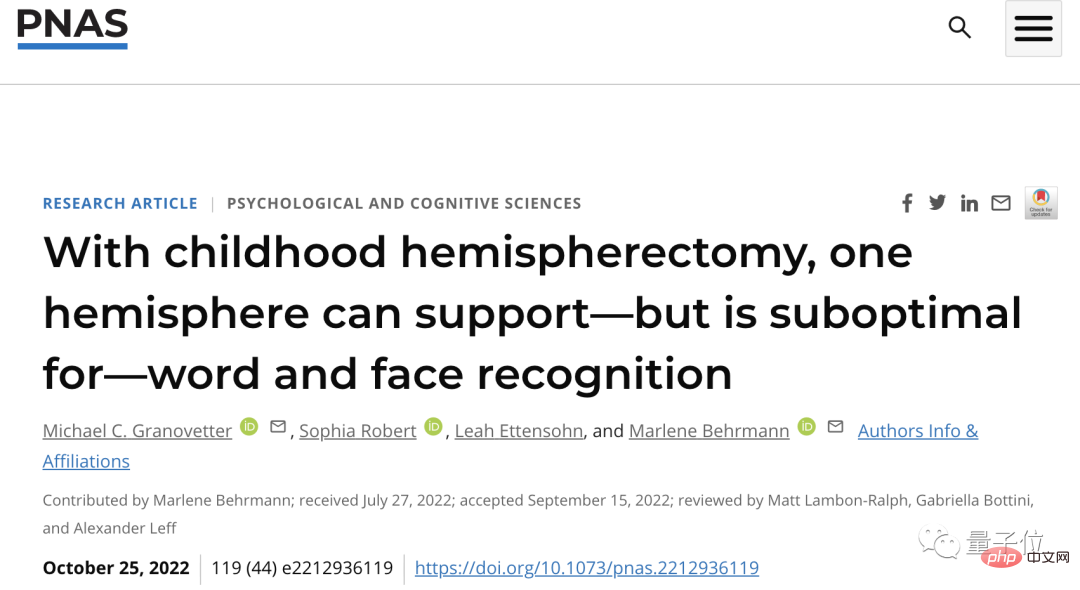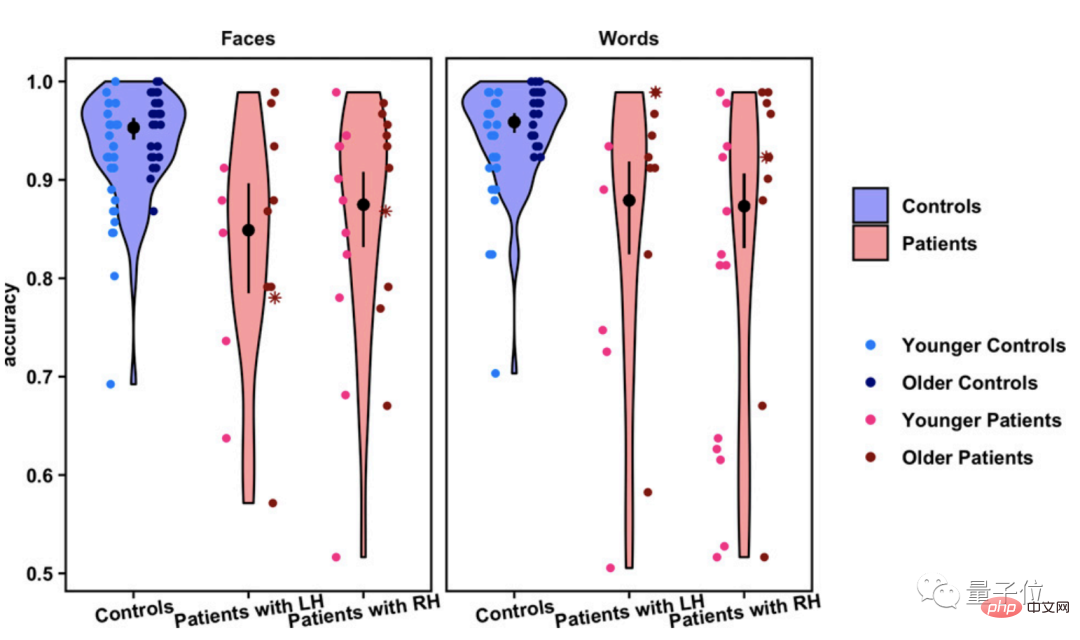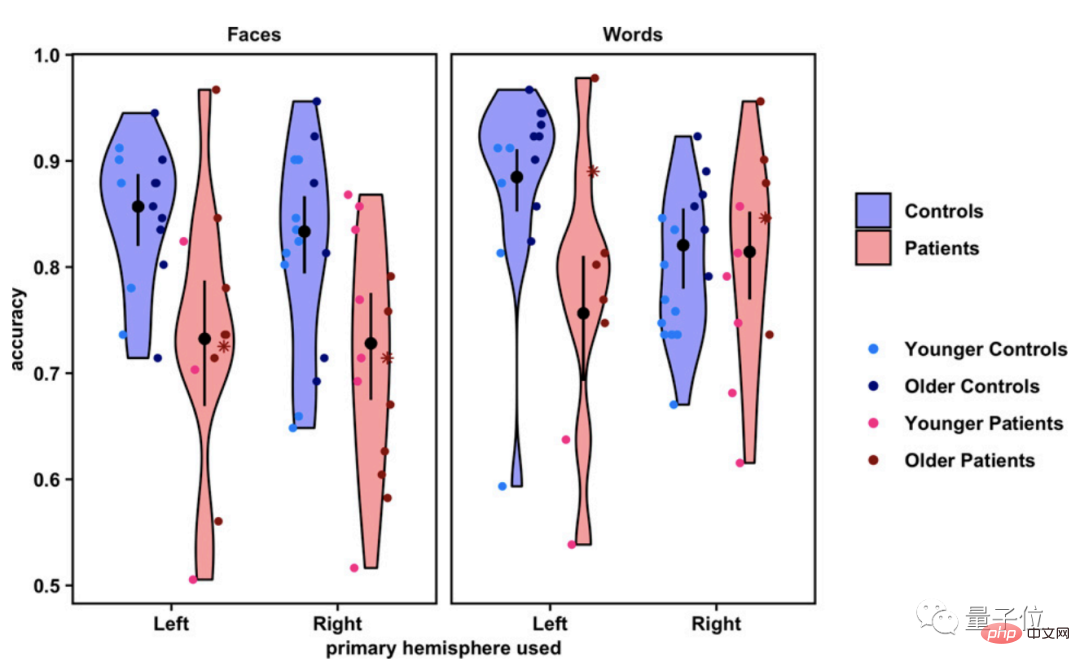Home > Article > Technology peripherals > With only half a brain left, people can still read and read faces with an accuracy of 80%
With only half a brain left, people can still think, and they are relatively normal! (Don’t be afraid, this article is not scary)
A new study shows:
More than 80% of the time, people who have half their brains removed can read correctly and are not face blind. .
The team behind this study noted:
The brain is surprisingly plastic and can adapt to massive trauma by rewiring itself.
Losing half of your brain does not mean losing half of your functions!
Relevant papers have been published in PNAS (the official scientific magazine of the National Academy of Sciences), one of the four most famous journals in the scientific community.

Let’s take a look at how the researchers operate.
They hope to clarify two issues through this experiment:
(Here’s a question: Do you think people with a developed left brain or a developed right brain are smarter? The answer will be revealed soon)
First, they found 58 normal people ( as a control) and a special group of young people:
40 patients who had undergone childhood hemispherectomy. Their median age is 16.7 years.
Generally speaking, because hemispherectomy is so rare, scientists rarely have the opportunity to have access to multiple suitable patients at once.
But due to some well-known reasons in recent years, telemedicine services have become more popular, so the team was able to find so many people at the same time. This number is unprecedented in this type of research.
In order to distinguish which side of the brain is mainly preserved in patients, researchers call patients who have left brains left behind as LH patients, and patients who have left their right brains called RH patients.
Next, the researchers designed and conducted 2 sets of experiments.
Let’s talk about Experiment 1 first: The subjects watched many pairs of words and face images in the center of the visual field.
Each group of words has two words, and they are exactly the same or only differ by one letter; for example: "soup" and "soap", "tank" and "tack".
Similarly, there are two portraits in each group, and they are exactly the same or look little different.
These words or figures are played in groups, and one of them appears first for 750 milliseconds, and then the other one "flashes by".

The subjects were then asked to tell whether the figures or words they just saw were the same or different.
After initially collecting the data, the researchers conducted generalized linear mixed effects model (LMEM) fitting and other analyses.

#The results show that in terms of face and word recognition, the overall performance of normal people is indeed better than that of patients.
However, the average accuracy difference between patients and normal people on these tasks does not exceed 10%, and the patients' accuracy rate reaches more than 80%.
In addition, there is no significant difference in the discrimination accuracy between LH and RH patients.
In order to more directly compare whether there are any functional differences between the single hemisphere of the patient's brain and that of normal people, the researchers also conducted Experiment 2.
What the subjects saw were still these pairs of words and portraits, and the playback method was the same as above.
But this time, all normal people only use half of their visual field to view words or portraits. They were blindfolded with one eye and observed only with the other eye. Half of them only used their left eye, while the others only used their right eye.
The patients were allowed to see with both eyes.
After collecting the data, the researchers also conducted generalized linear mixed effects model (LMEM) fitting and other analyses.
The results show that even if one eye is covered, the accuracy of normal people in identifying faces is still higher than that of patients; however, in terms of word recognition, there is not much difference between normal people and patients who see with the right eye.
What about normal people who see with their left eye?
Their performance in word discrimination is better than that of people who see with their right eye. However, when it comes to seeing faces, there is no significant difference when looking with the left or right eye.

Regarding these new experimental results, Dr. Marlene Behrmann, corresponding author of the paper and professor of psychology, said happily:
This opens up the study of human neuroplasticity The door, now we can finally start to study the brain's reorganization ability!
The team will continue to explore the functional upper limit of a single cerebral hemisphere in the future.
The research team comes from the University of Pittsburgh and Carnegie Mellon University.
The first author and corresponding author of the paper, Dr. Michael Granovetter, is also currently studying epilepsy and autism.

Another corresponding author, Marlene Behrmann, is currently a professor of ophthalmology and psychology at the University of Pittsburgh and Carnegie Mellon University.

The above is the detailed content of With only half a brain left, people can still read and read faces with an accuracy of 80%. For more information, please follow other related articles on the PHP Chinese website!